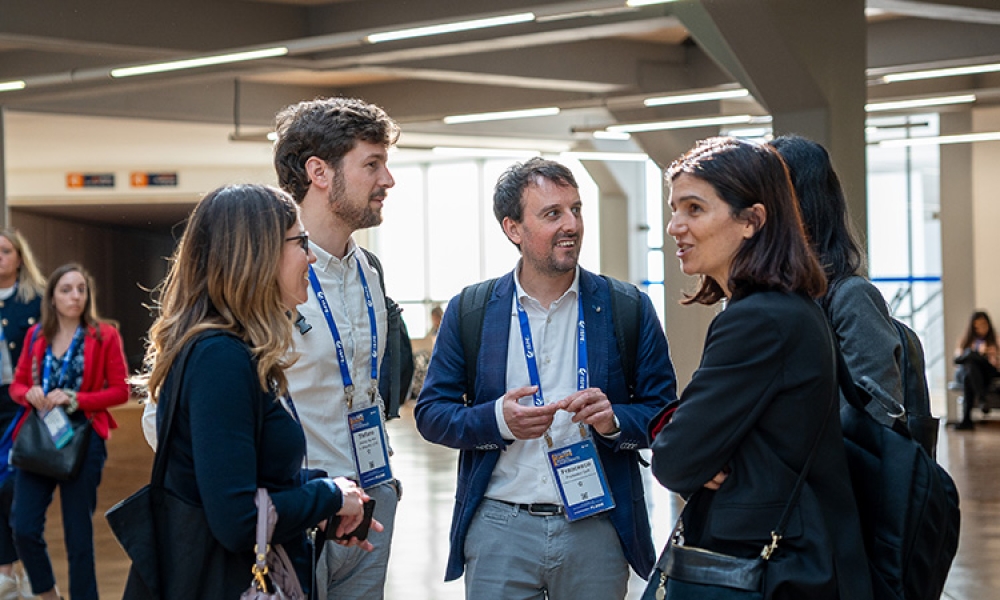Pharma 4.0™ represents a transformative shift within the pharmaceutical industry, redefining how medicines are developed, manufactured, and delivered. At its core, Pharma 4.0 involves the integration of advanced digital technologies...
Submit Your Best Content to ISPE
ISPE’s official blog, iSpeak accepts contributions from our Members and professionals in the pharma industry.
Biomanufacturing is advancing rapidly, and as the industry evolves, so too must the facilities that support it. Therapeutic modalities are becoming more diverse, and with the increasing demand for speed, flexibility, and sustainability in production, biopharmaceutical facilities must be prepared to meet these new challenges.
The ISPE Sterile Products Processing Community of Practice (CoP) Steering Committee continues its series of blog posts, where committee members and other contributing subject matter experts (SMEs) dive into the validation and use of essential equipment and processes that drive sterile processing in the pharmaceutical industry. The aim is to provide practical insights that will enhance your...
Nathan Roman is a Director, Industry Advisor, and Global Brand Ambassador with Ellab. He has been an ISPE Member since 2004. In the question-and-answer interview below, Roman reflects on why he joined ISPE, how ISPE has impacted his career, and more.
Biotech companies are meeting modern sustainability objectives and gaining a competitive advantage by implementing process intensification strategies and continuous manufacturing technologies to improve production efficiency while reducing impacts on our environment. Attendees will learn about innovative approaches to process intensification, continuous manufacturing, and sustainability in...
In 2023, the ISPE Commissioning and Qualification (C&Q) Community of Practice (CoP) conducted a survey on the adoption of integrated C&Q, focusing on the use of paperless/digital systems for planning, executing, and reporting C&Q activities. According to the survey, 74% of respondents anticipated using digital validation tools (DVTs) for C&Q by 2024. “Over the last five years,...
In the pharmaceutical industry, disaster recovery is not just about protecting business continuity; it is about safeguarding patient safety, data integrity, and the entire supply chain. The increasing complexity of global pharmaceutical operations exposes companies to a broad spectrum of risks, ranging from man-made disasters such as geopolitical conflicts to natural disasters that can cripple...
ISPE’s Q12 Implementation team, a working group under the auspices of ISPE's Product Quality Lifecycle Implementation (PQLI)® committee, continued their series of training events with a well-attended course delivered to Singapore’s Health Sciences Authority (HSA) in November 2024.
The ISPE Sterile Products Processing Community of Practice (CoP) Steering Committee continues its series of blog posts, where committee members and other contributing subject matter experts dive into the validation and use of essential equipment and processes that drive sterile processing in the pharmaceutical industry. The aim is to provide practical insights that will enhance your...
Per- and polyfluoroalkyl substances (PFAS) have emerged as a major concern in the pharmaceutical industry and beyond. Restricting their use is heavily debated. On the one hand, these “forever chemicals” can pose environmental and human health risks. On the other hand, their unique physical and chemical properties can make them important for pharma and ultimately for helping to enable access to...
Ronald Bauer, PhD and Christina Meissner, PhD from the Austrian Agency for Health and Food Safety (AGES) provided a much-anticipated presentation on the requirements for data management in light of the revised Annex 1 at the 2024 ISPE Pharma 4.0™ and Annex 1 Conference in Rome, Italy in December 2024.
In today’s rapidly evolving pharmaceutical landscape, advancing technologies, shifting regulatory landscapes, and emerging global challenges such as supply chain disruptions, and drug shortages have significantly impacted how we develop, manufacture, and deliver treatments. These factors underscore the critical need for robust validation approaches for computerized systems to safeguard patient...
The US pharmaceutical manufacturing sector is preparing for continued, significant growth over the next decade, fueled by robust investments and evolving market demands. At the same time, this growth presents significant challenges—chief among them, the imperative to attract and retain a highly skilled workforce and to integrate advanced technologies that streamline operations and boost...
In the pharmaceutical industry, expertise is essential—but connection is what turns expertise into impact. No single professional, company, or discipline holds all the answers to the challenges we face. Progress happens when experts come together, share knowledge, and build upon one another’s insights. That’s exactly what ISPE enables: a global network of professionals who not only advance...

















